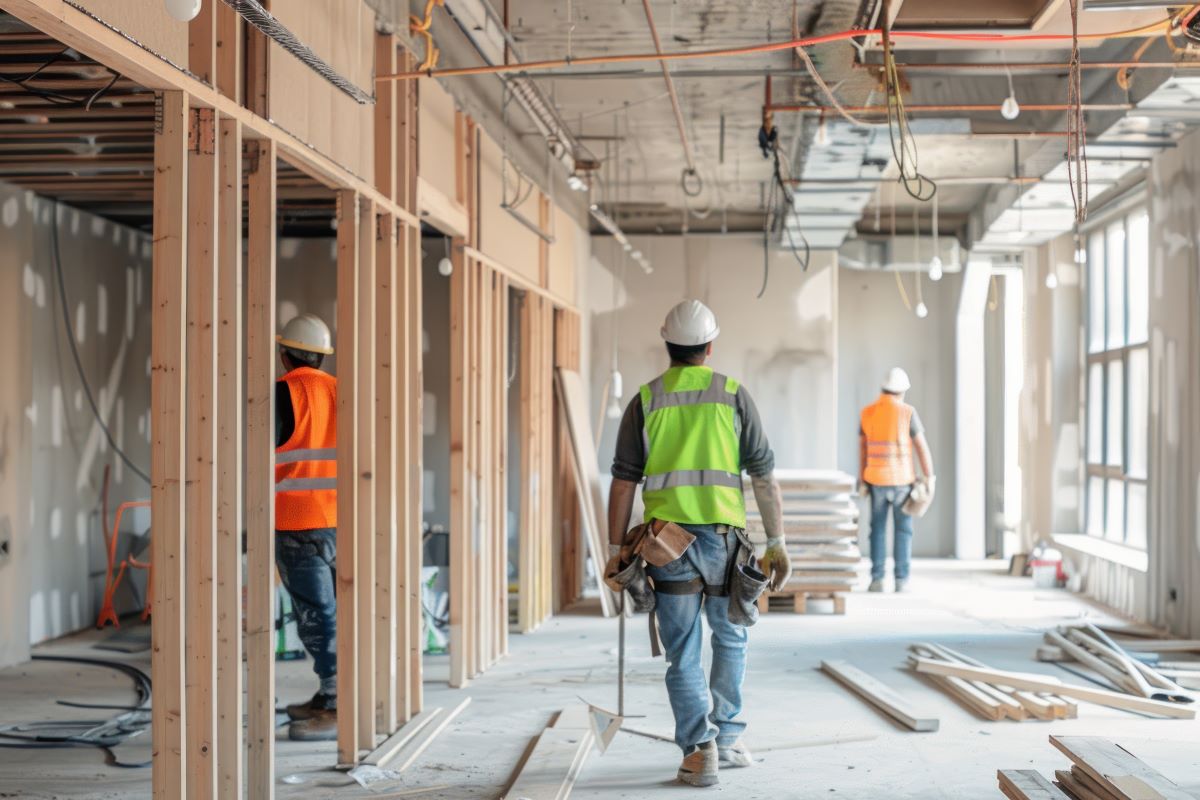By TJ Grim, Ready 2 Respond Trainer
Even well-managed construction projects can introduce new risks to a facility, including unexpected water intrusion. From untested plumbing to pipes punctured during framing, unexpected water intrusions can occur. When they do, the impact can damage building materials and delay a timely return to full operations.
Facility teams can play an active role in mitigating water-related construction risks. Early planning, routine monitoring, and clear protocols can help prevent moisture damage from becoming a long-term problem.
Common Causes
Water-related issues during construction can stem from a wide range of sources, including both external weather conditions and internal system failures. Some of the most frequent culprits include:
- Improper plumbing work – New plumbing installations or reconnections to existing lines may not be adequately pressure-tested before being put into use.
- HVAC system testing – New systems may leak if valves, connections, or pumps are not secured or monitored.
- Accidental activations – Sprinkler systems or other mechanical components can be triggered unexpectedly or leak during installation or testing.
- Unsealed roofs – Roofing work that’s mid-phase during rainstorms can allow water into the structure.
Water damage often goes undetected during the construction process, as moisture can become trapped in materials like drywall or insulation – concealing leaks until long after the project is completed.
Plan Ahead
Facility teams should be involved from the early stages of a project to identify vulnerabilities and advocate for moisture control strategies. Key strategies include:
- Clarify contractor responsibilities – Ensure scopes of work address water protection, with requirements for daily inspections and temporary sealing where needed.
- Integrate moisture monitoring into the project plan – Request the use of moisture meters in high-risk areas to detect problems early.
- Train internal teams on risks – Ensure staff overseeing construction are prepared to assess and address water intrusion threats, especially during high-risk phases such as roofing or plumbing.
Inspect and Monitor
Construction sites can shift rapidly from one day to the next, making consistent monitoring essential. Designate a team member to conduct daily walkthroughs focusing on areas prone to water intrusion, and ensure they include ceilings, floors, mechanical spaces, and wall cavities (where possible).
It’s also essential to track humidity and temperature levels in affected areas, especially if drying equipment is in use. Maintain close communication with contractors to ensure any leaks are reported immediately and documented correctly.
What to Do When a Leak Occurs
Even with careful planning, water intrusions can still occur. When they do, rapid response is essential:
1. GO NOW! – Drop what you are doing and respond quickly to prevent further damage.
2. EVALUATE – Is it clean water in a safe area? If not, contact your supervisor.
- Safety: Slow down and stay safe. Place wet floor signs and warn people to avoid the area.
- Hazards: Watch for electrical risks, falling debris, and contaminated water.
3. STOP THE SOURCE – Shut off the water supply and contain any intrusion from outside the building.
4. MITIGATE
- Extract, extract, extract! Using a commercial extractor to remove water is 1,200 times more effective than relying on evaporation alone.
- Use meters to identify what is wet. Check flooring, carpet and walls with moisture meters to determine how far water has spread and how high up walls it has migrated.
- Check lower floors or basements. Contact your supervisor if multiple floors are affected.
- Document immediately: Take photos, note the time and source, and record which contractors, if any, assisted with mitigation.
- Communicate: Inform project managers, contractors, and internal stakeholders promptly.
5. CLEAN – Set up air scrubbers first, then clean the affected area.
6. START DRYING – Optimize placement of dehumidifiers and airmovers for effective drying.
7. TIDY UP – Organize and wrap all cords and hoses to reduce trip hazards.
8. MONITOR – Evaluate drying progress throughout the process by documenting moisture readings daily – include all affected materials and compare materials’ moisture content to dry standards taken from unaffected areas.
By prioritizing planning, routine monitoring, and swift response, facilities professionals can help ensure their new or renovated spaces are built on a solid (and dry) foundation.
Contact the R2R team for help with preparedness protocols and customized water damage response training. For facility management tips, follow us on LinkedIn and subscribe to our Facility Insights newsletter.


Resilient Leadership: Guiding Facilities Teams through Challenges
10 Common Water Damage Risks on College Campuses